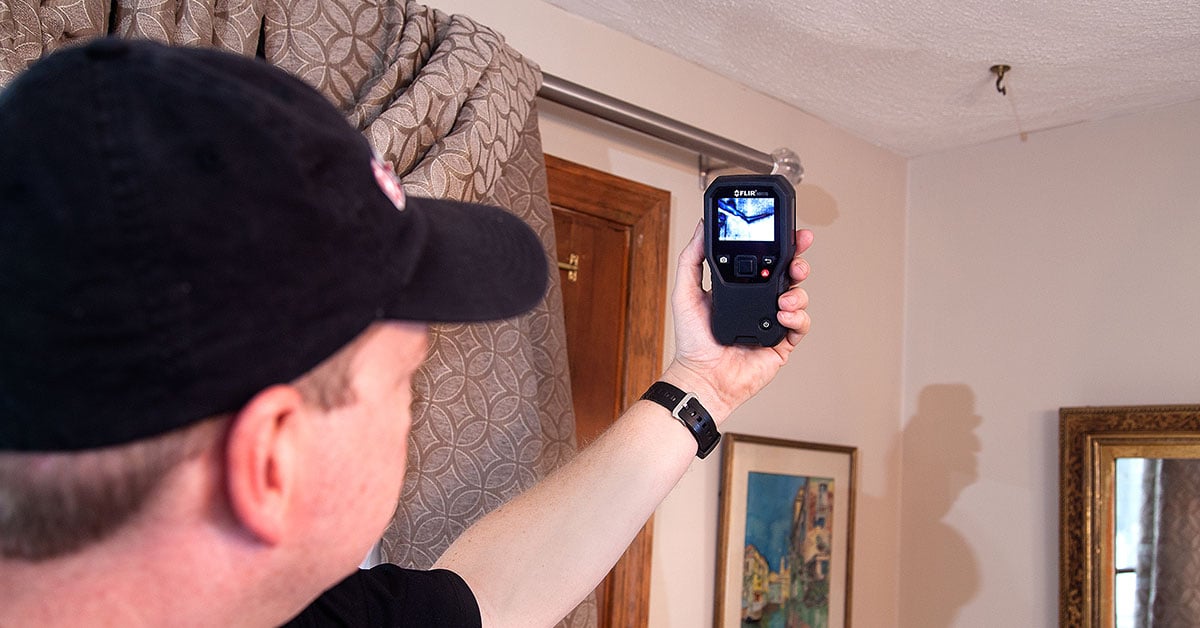How to Inspect If Your Home Has a Concealed Leakage
How to Inspect If Your Home Has a Concealed Leakage
Blog Article
Just how do you really feel when it comes to Locating water leaks?

Early discovery of leaking water lines can alleviate a possible catastrophe. Some tiny water leakages might not be visible.
1. Analyze the Water Meter
Every house has a water meter. Checking it is a proven way that assists you discover leaks. For beginners, shut off all the water resources. Ensure no person will certainly flush, utilize the tap, shower, run the washing machine or dishwashing machine. From there, most likely to the meter as well as watch if it will alter. Considering that no one is using it, there should be no motions. If it moves, that suggests a fast-moving leakage. Likewise, if you discover no changes, wait a hr or two and inspect back once again. This means you may have a sluggish leakage that could even be below ground.
2. Check Water Usage
Examine your water costs and also track your water intake. As the one paying it, you should notice if there are any kind of discrepancies. If you spot sudden changes, despite your consumption being the same, it indicates that you have leaks in your plumbing system. Keep in mind, your water expense must fall under the exact same range each month. A sudden spike in your costs indicates a fast-moving leak.
A steady boost every month, even with the exact same practices, reveals you have a slow leakage that's likewise slowly rising. Call a plumber to completely inspect your residential or commercial property, particularly if you really feel a warm location on your floor with piping underneath.
3. Do a Food Coloring Test
30% comes from commodes when it comes to water intake. Test to see if they are running properly. Drop flecks of food shade in the storage tank and also wait 10 minutes. There's a leakage in between the tank as well as bowl if the color somehow infiltrates your dish during that time without flushing.
4. Asses Outside Lines
Do not neglect to inspect your outside water lines as well. Needs to water permeate out of the connection, you have a loose rubber gasket. One tiny leak can lose heaps of water and also spike your water bill.
5. Analyze the circumstance as well as check
Homeowners should make it a practice to inspect under the sink counters and also inside cabinets for any type of bad odor or mold and mildew development. These two red flags indicate a leakage so prompt focus is required. Doing routine examinations, even bi-annually, can conserve you from a major trouble.
Examine for stainings as well as damaging as a lot of devices and pipelines have a life span. If you believe dripping water lines in your plumbing system, do not wait for it to escalate.
Early discovery of dripping water lines can alleviate a possible calamity. Some little water leaks may not be visible. Examining it is a surefire method that assists you uncover leaks. One small leakage can throw away tons of water and surge your water costs.
If you think dripping water lines in your plumbing system, do not wait for it to intensify.
WARNING SIGNS OF WATER LEAKAGE BEHIND THE WALL
PERSISTENT MUSTY ODORS
As water slowly drips from a leaky pipe inside the wall, flooring and sheetrock stay damp and develop an odor similar to wet cardboard. It generates a musty smell that can help you find hidden leaks.
MOLD IN UNUSUAL AREAS
Mold usually grows in wet areas like kitchens, baths and laundry rooms. If you spot the stuff on walls or baseboards in other rooms of the house, it’s a good indicator of undetected water leaks.
STAINS THAT GROW
When mold thrives around a leaky pipe, it sometimes takes hold on the inside surface of the affected wall. A growing stain on otherwise clean sheetrock is often your sign of a hidden plumbing problem.
PEELING OR BUBBLING WALLPAPER / PAINT
This clue is easy to miss in rooms that don’t get much use. When you see wallpaper separating along seams or paint bubbling or flaking off the wall, blame sheetrock that stays wet because of an undetected leak.
BUCKLED CEILINGS AND STAINED FLOORS
If ceilings or floors in bathrooms, kitchens or laundry areas develop structural problems, don’t rule out constant damp inside the walls. Wet sheetrock can affect adjacent framing, flooring and ceilings.
https://www.servicemasterbyzaba.com/blog/how-to-detect-water-leakage-in-walls/

I discovered that post about Locating water leaks when doing a lookup on the internet. I beg you take a moment to promote this article if you appreciated it. Thank you so much for your time spent reading it.
Report this page